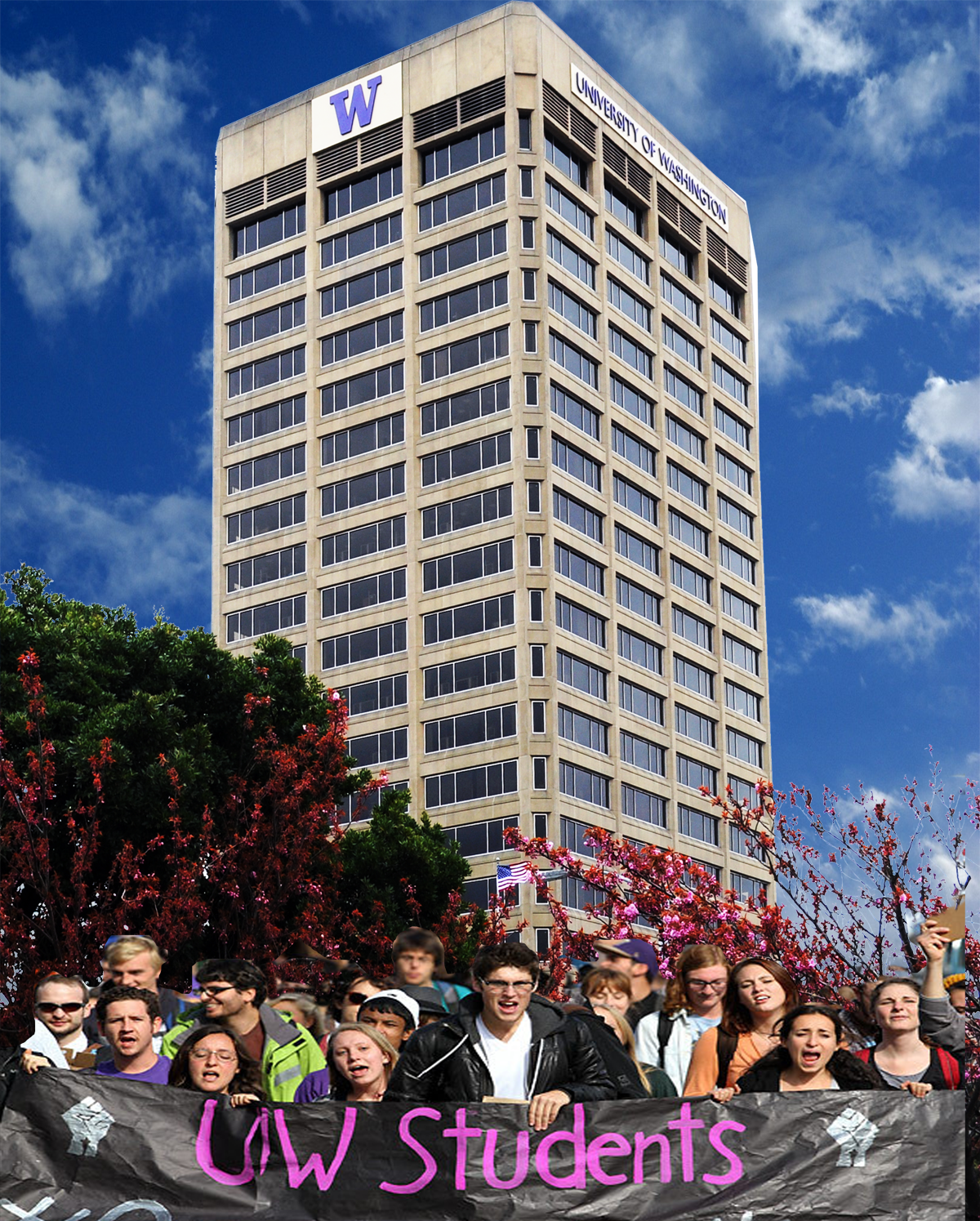“the total number of full-time faculty members … grew from 11,614 to 12,019 between 1975 and 2008, the total number of administrators grew from 3,800 to 12,183 — a 221 percent increase”
While recently we have read a lot about the efforts of the state legislature to cap and reduce tuition at Washington’s higher education schools, nothing in the discussion has addressed the very real issue issues of HOW to pay for the cuts in tuition or, worse, how to cut costs at the Universities themselves.
One target should be the costs of administration. Posts on the AAUP listserv about admin costs always seem to be answered by denial (from the  admin) that this is true. I remain skeptical. From my non quantitative point of view. admin certainly SEEMS to have ballooned. When I came here the med school admin lived in a small complex of offices . Now our Dean has his own admin building plus a huge expansion of the part of the School devoted to his miscellaneous important staff. At the Dept level, admin consisted of a secretary for the chair, a fiscal person, a departmental administrator. Today our chair has a staff of dozens.
admin) that this is true. I remain skeptical. From my non quantitative point of view. admin certainly SEEMS to have ballooned. When I came here the med school admin lived in a small complex of offices . Now our Dean has his own admin building plus a huge expansion of the part of the School devoted to his miscellaneous important staff. At the Dept level, admin consisted of a secretary for the chair, a fiscal person, a departmental administrator. Today our chair has a staff of dozens.
Where faculty used to get a few extra dollars for handling admin tasks like student discipline and curriculum, we now have Deans and Provosts who also do these tasks ..for far higher salaries. Above this all universities have Presi8dents, and assorted vice and assistant Presidents, all of whom receive CEO like salaries.
I have also seen a vast increase in the number of lawyers running around campus. Prohibited by the state constitution from being represented by attorneys outside the office of the AG, the UW has hired these holders of the JD to run offices entitled compliance, regulation, risk management, human resources, etc. My own term for this phenomenon is CYA, especially since all these non attorneys claim not be regulated by the ethical codes of the Washington State Bar.
Still, this anecdote is limited to my perspective from the UW Medical School. Now the NY Times has a very disturbing report on the wide problem. Why have costs of higher education ballooned? Is it the faculty? Is it the cuts in state funding?
Sandy Baum of the Urban Institute supports the idea that the states are the bad guys: She told NPR, “So it’s not that colleges are spending more money to educate students. It’s that they have to get that money from someplace to replace their lost state funding — and that’s from tuition and fees from students and families.” However, the NY Times reports that the Department of Education claines that ” administrative positions at colleges and universities grew by 60 percent between 1993 and 2009, which Bloomberg reported was 10 times the rate of growth of tenured faculty positions. Even more strikingly, an analysis by a professor at California Polytechnic University, Pomona, found that, while the total number of full-time faculty members in the C.S.U. system grew from 11,614 to 12,019 between 1975 and 2008, the total number of administrators grew from 3,800 to 12,183 — a 221 percent increase.”
Jon Marcus of the New England Center for Investigative Reporting has come to similar conclusions “The number of non-academic administrative and professional employees at U.S. colleges and universities has more than doubled in the last 25 years, vastly outpacing the growth in the number of students or faculty, according to an analysis of federal figures. The disproportionate increase in the number of university staffers who neither teach nor conduct research has continued unabated in more recent years, and slowed only slightly since the start of the economic downturn, during which time colleges and universities have contended that a dearth of resources forced them to sharply raise tuition.”
Benjamin Ginsberg on the Washington Times wrote, “Between 1975 and 2005, total spending by American higher educational institutions, stated in constant dollars, tripled, to more than $325 billion per year. Over the same period, the faculty-to-student ratio has remained fairly constant, at approximately fifteen or sixteen students per instructor. One thing that has changed, dramatically, is the administrator-per-student ratio. In 1975, colleges employed one administrator for every eighty-four students and one professional staffer—admissions officers, information technology specialists, and the like—for every fifty students. By 2005, the administrator-to-student ratio had dropped to one administrator for every sixty-eight students while the ratio of professional staffers had dropped to one for every twenty-one students. “
